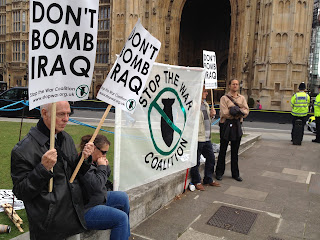Tour 4 Parliament Square
Our fourth tour is of a favourite venue for tourists and demonstrators. Parliament Square adjoins the main seat of government, the Royal Palace of Westminster with its Houses of Lords and Commons opposite Westminster Abbey where monarchs are crowned. Take a 15 min walk from Victoria Station, or take a bus, along Victoria Street to the Abbey forecourt just off the Square. From Westminster Abbey we cross to the green to inspect the statues of Nelson Mandela and Mahatma Gandhi and, behind them, the Supreme Court. Proceeding past the statue of Winston Churchill across to Parliament we return to the Abbey via St Margaret’s Church.
Westminster Abbey
With both spiritual and cultural significance the Abbey has the tomb of Saint Edward besides 3,300 ‘lesser’ mortals and is a place of national pilgrimage. Site of the anointing and crowning of British monarchs and of many state occasions Westminster Abbey traces back to Edward its saintly founder who began its building in 1044. The saint’s shrine escaped despoliation at the Reformation and those who want to pray there visit free on request. Several hundred people attend daily choral evensong for which there is again no admission fee. The statues of 20th century martyrs above the west door give reminder though of the cost of Christian believing.
Nelson Mandela
Of Nelson Mandela (1918-2013) Barack Obama said: ‘He makes me want to be a better man. He speaks to what is best inside us’. Both men rose to be the first black leaders of South Africa and the United States respectively. That ascent for anti-apartheid revolutionary, political leader, and philanthropist, Mandela, who served as President of South Africa from 1994 to 1999, cost him 26 years imprisonment. His statue is accessed by crossing from the west end of Westminster Abbey to Parliament Square Garden where in 2007 Mandela himself was moved to hear Prime Minister Gordon Brown describe it as a‘ beacon of hope’ for the oppressed across the world.
Mahatma Gandhi
Gandhi said ‘Happiness is when what you think, what you say, and what you do are in harmony’. His plinth like Mandela’s is arranged to be among the lowest of the statues in Parliament Square Garden on account of humility that speaks truth to power. That power for Mahatma Gandhi (1869-1948) was the British colonial power he successfully contested in its rule of India. There is irony in the placing of this statue in 2015 near that of Winston Churchill, opponent of Indian independence, who once called him ‘a seditious Middle Temple lawyer, now posing as a fakir of a type well known in the East, striding half-naked up the steps of the Vice-regal Palace’.
The Supreme Court
Cross from Parliament Square Garden to the Supreme Court building behind the statues of Mandela and Gandhi. Both men witnessed to justice and integrity, ideals central to the proceedings of the Court that hears cases of the greatest public or constitutional importance affecting the whole population. The Supreme Court is the final court of appeal in the UK for civil cases, and for criminal cases from England, Wales and Northern Ireland. It’s striking logo combines the national flowers of England, Northern Ireland, Scotland and Wales. You can pass through security to visit the court and watch proceedings on weekdays from 0930 to 1630.
Winston Churchill
Churchill said ‘we make a living by what we get, but we make a life by what we give’. His statue on the corner of the Garden across from the Supreme Court captures the indomitable Sir Winston Churchill (1874-1965) whose gift of leadership and service, especially during World War II, makes him one of the UK’s most celebrated Prime Ministers. His speeches and radio broadcasts were key morale builders 1940-1 when Britain and the Commonwealth stood alone against Hitler’s Germany. Churchill though remains a controversial figure. Gandhi’s statue nearby reminds us that his outspoken defence of the British Empire showed some failure in judgement.
Houses of Parliament
The French word for speaking lies behind the word Parliament which is a key place of debate in the UK with three functions: representing the electorate, making laws, and overseeing the government via hearings and inquiries. It has three linked authorities: the Monarch, the House of Lords and the House of Commons which people talk about as ‘Westminster’. This links to the original Palace of Westminster rebuilt like the Abbey Church by the saintly King Edward (1003-1066) on a site by the Thames used by English rulers for centuries before. The public are admitted free to the Houses of Parliament when in session, usually on weekdays from 2.30pm until late evening.
St Margaret’s Church
Cross from Parliament to St Margaret’s Church that sits in the shadow of Westminster Abbey. It was built to complement the Abbey by serving the pastoral needs of the parish - baptisms, marriages and funerals - especially needed when the Abbey was a Benedictine monastery. To this day St Margaret’s is the parish Church of the House of Commons. The fine east window was given by Henry VIII to commemorate his first marriage. Samuel Pepys was married here, as was Churchill. William Caxton, Walter Raleigh and John Milton are buried here. St Margaret’s is open to the public, admission free, in daylight hours with exceptions linked to big Abbey services.











Comments
Post a Comment